A History of St. Andrew`s Church, Charmouth
The Reverend Thomas Snow was Curate from 1827 until 1834 whilst Reverend William Glover was Rector. He would have lived in the new Rectory. We are fortunate today in that we have a record of this time through 2 watercolours his cousin, Diana Sperling painted in 1828. Thomas Snow (1786-1867) the fourth son of the banker George Snow, and his wife Elizabeth, was born at Langton House. Blandford Forum, Dorset in 1786. At the age of twenty-four he entered Queens’ College, Cambridge and became part of the circle associated with Charles Simeon, the vicar of Holy Trinity Church. In November 1814 Snow was appointed by Sir Thomas Baring to be the vicar of Micheldever and East Stratton, north of Winchester. In December 1815 he married Maynard Eliza Farquhar, a widow from East Stratton. Gradually Snow was drawn into the small group of Anglican discontents known collectively as the ‘Western Schism’ and in May 1816 he was baptised by full immersion, and thereby severed his ministerial connection with the Church of England. The Western Schism was the creation of a network of mostly well-connected Evangelicals led by members of the aristocratic Baring family, whose wealth and influence came from banking and commerce.. His views were to later change and he returned to the mother Church and became Curate at Chettle, north-east of Blandford Forum, in 1826. This was only brief and the following year he took up the same position at Charmouth, In December 1827 Snow preached a rousing address entitled: “A Sermon preached at Charmouth Church”, on the second Sunday in Advent, pointing out one particular in the character of a real Christian, wherein he differs from the mere formalist. By this sermon he made clear his Evangelical orthodoxy. The cover of the sermon which was published soon after is shown here.
An interesting anecdote of his time is the following letter:
"Mrs. Mary Brown, when she was staying in Lyme, heard of a striking new preacher at Charmouth. They took a fly to Charmouth and found that rumour had not exaggerated. Mr. Snow was the finest preacher they had heard. He had been a seceder but had returned to the church purified, a burning and shining light. They set off at ten every Sunday morning, remained for the afternoon service and returned for five o'clock dinner. But presently even the road to Charmouth was threatened. Mrs. Snow, after calling on them mentioned that she thought she would go home by the Axminster-Road because, she had remarked a crack in the cliff road. The next morning a butcher and cart fell in a chasm of forty feet."
(This road between Lyme and Charmouth was finished in June 1825. On 14th January in the following year it began to subside at the west end twenty feet and at the eastern eight feet. It was quickly repaired and lasted for ninety years). After Thomas left Charmouth he took on the living of St. Dunstans, Temple Bar in 1834. He went on to marry Maynard Elizabeth Doyly and have six children and died in 1867 aged 81.
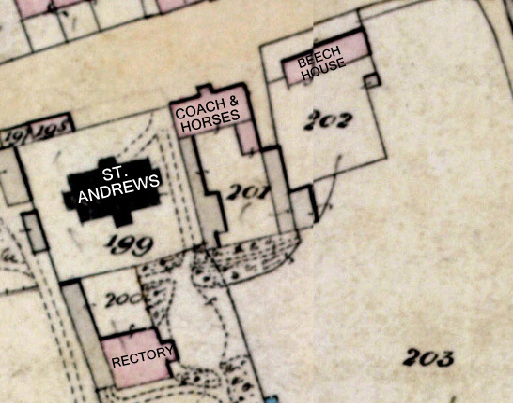
1841 Tithe Map showing the Rectory where he stayed behind the Church with its elaborate garden.

1830 Poor Rates List
Mr Issac Cook - House & Garden - 9d
Mr. Issac Cook - Reverend Snow - 4d
Mr. Gundry - William Foss - Three Crowns
Thomas Snow is shown renting Beech House from Isaac Cooke, from Clifton, Bristol.
Isaac Cooke was Patron of Charmouth Church from 1826 until 1839, during the occupancy of Glover and Hales as Rectors. He lived in Clifton and was a Solicitor and at one time Mayor of Bristol. This was also where the Reverends Thomas Snow and William Glover originated from, as well as several other inhabitants. He bought Beech House from William Edwards and may well have rebuilt it at the same time as the Rectory as they are very similar as shown by the doorway illustrated here. The 1831 Poor rates show Isaac Cooke living and owning Beech House, with Thomas Snow living in the new Rectory and renting a field from him, which was probably the piece of ground Sandford House, Littlecote and Carrum House were later to be built on by Samuel Dunn.
Isaac Cooke was only there briefly as the 1841 Tithe map shows it unoccupied and soon after John Hodges, the butcher moves in and opens his shop in the adjoining Winton House. In 1835 Isaac gave £100 towards the building of the new Church, the largest amount donated. He died in 1852 aged 81 at Windsor Terrace in Clifton. His son, of the same name continued in his business and was Mayor of Bristol in 1857. An advert below shows their involvement with promoting one of the many Railway companies attempting to link Charmouth with Bridport & Lyme Regis.

1841 Issac Cooke (Senior) is shown aged 70 living in Windsor Terrace, Clifton, Bristol as a Solicitor. He died in 1852 leaving his Estate to his sons George and Issac. He was born in 1771 and married Lydia Seddon


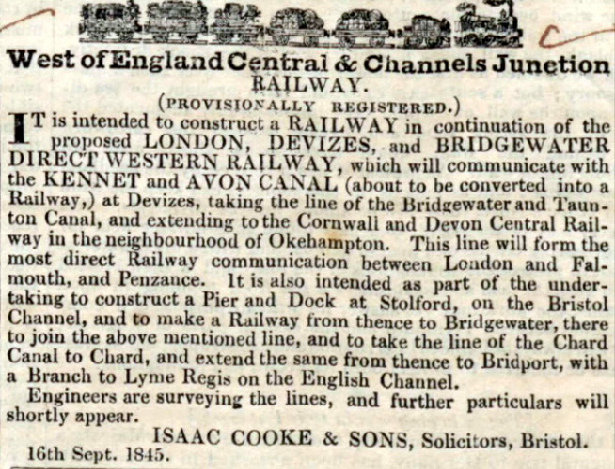
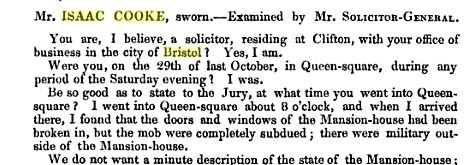
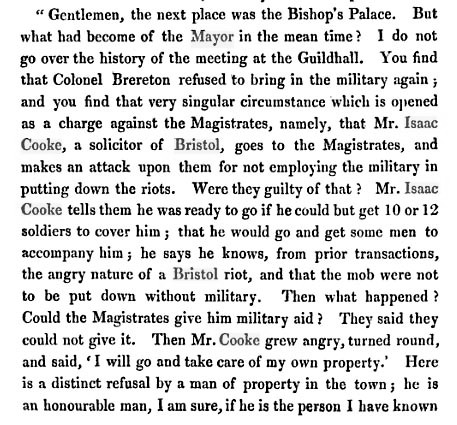
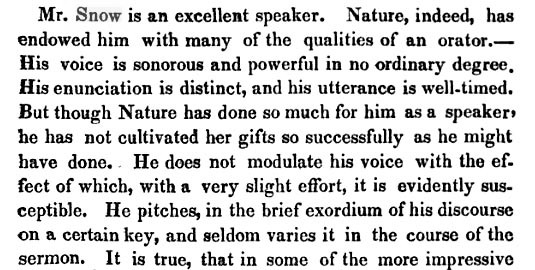
The Bishop of Llandaff, owner of Lily Farm gave £10.
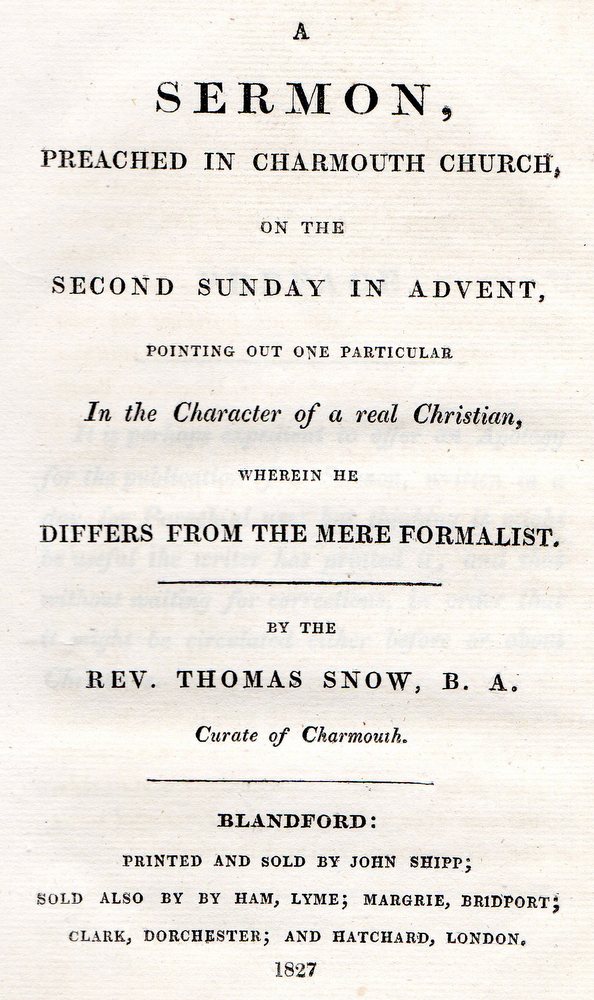
Thomas Snow
Having satisfied all that the Bishop of Bristol required for him to be restored into the ministry of the Church of England, Snow then served two curacies in his diocese. The first was at Chettle, north-east of Blandford Forum, 1826-27, and then at Charmouth, near Lyme Regis, 1827-33. In December 1827 Snow preached a rousing address entitled, A Sermon preached at Charmouth Church, on the second Sunday in Advent, pointing out one particular in the character of a real Christian, wherein he differs from the mere formalist. By this sermon he made clear his Evangelical orthodoxy
A Description of the village of Charmouth, Dorset, England as described by Samuel Lewis in A Topographical Dictionary of England, Published in London in 1831.
Charmouth, a parish in the hundred of Whitchurch-Canonicorum, Bridport division of the county of Dorset, 2 miles (N.E. by E.) from Lyme-Regis, containing 607 inhabitants.
The living is a discharged rectory, in the archdeaconry of Dorset, and diocese of Bristol, rated in the king's books at £8. 16. 8., endowed with £200 private benefaction, and £200 royal bounty. J. Cooke, Esq. was patron in 1826. The church is dedicated to St. Matthew.